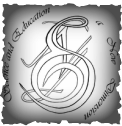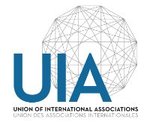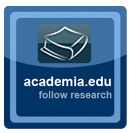Science and Education a New Dimension
Iss. 257. Philology 75
E. Yu. Dubenko Antireflective tendencies of the information age as a trigger of conceptual flattening in the practice of literary translation
https://doi.org/10.31174/SEND-Ph2021-257IX75-01
Abstract. The article deals with the phenomenon of clip thinking which is characterized by a number of distinctive features that exercise a considerable influence on the perception of a literary text and its interpretation by the translator. The translational deci- sions that are the consequence of such antireflective tendencies have been analyzed on the basis of the translation versions of the titles of literary and cinematographic texts as those stylistically relevant elements which condition the conceptual expectations of the target audience and its overall impression about a novel or a film.
Keywords: system thinking, clip thinking, literary translation, conceptual flattening, subtext.
E. Yu. Dubenko Antireflective tendencies of the information age as a trigger of conceptual flattening in the practice of literary translation
A. Berestova Text application as a marker of intertext links in modern Ukrainian poetry
https://doi.org/10.31174/SEND-Ph2021-257IX75-02
Abstract. In the article proposed, the researcher tries to characterize the main manifestations of text applications on the basis of Ukrainian poetry of the late XX – early XXI centuries. The author of the research concludes that the text application is actively used in modern Ukrainian poetry as a marker of intertextual interaction and an actualizer of precedent texts of religious content, various genres of Ukrainian folk art, as well as Ukrainian and world literature. The text applications found in the processed poetic works play an important role in the creation of poetic text and perform the function of setting, informative-signaling, meaning-making, plot- forming functions, as well as the means of creating figurative and stylistic figures and the means of language play.
Keywords: poetic text, intertextual interaction, text application.
A. Berestova Text application as a marker of intertext links in modern Ukrainian poetry
O. Boinitska The Catholic Revival in English Literature
https://doi.org/10.31174/SEND-Ph2021-257IX75-03
Abstract. The article deals with research of the Catholic revival as a remarkable literary movement that amalgamated a number of authors who discussed problems of the Roman Catholicism in the works of various forms – from serious theological apologies to the popular genres like G.K. Chesterton’s detective stories. Such Catholic novelists like Evelyn Waugh and Graham Greene appeal to the wide readership and interpret the problem of faith in its complex ambivalence, actuality, psychological depth. Whilst Evelyn Waugh is in search for a solid ground in the Old Faith as an alternative to the modern anarchy and chaos, Graham Greene emphasizes on the faith’s conflicting ambiguities and contradictions.
Keywords: Catholic literary revival, English Catholic writers, problem of faith, Gilbert Keith Chesterton, Graham Greene, Evelyn Waugh.
O. Boinitska The Catholic Revival in English Literature
N. V. Chorna Magical Realism: Language World Picture in the novel «One Hundred Years of Solitude» of Gabriel Garcia Márquez
https://doi.org/10.31174/SEND-Ph2021-257IX75-04
Abstract. The article focuses on the study of language world picture of the magical realism discourse in the novel «One Hundred Years of Solitude» of Gabriel Garcia Marquez. The magical realism discourse depicts a realistic view of the modern world through the prism of mythological way of thinking and supplements mysterious, farial and mystical elements. The main conceptual characteristics of magical realism discourse are considered to be: fantastical elements, unity of reality and magic, possible words, mythical chronotope, author’s reticence, hyperbolization of the secret and metadiscourse.
Keywords: magical realism discourse, language world picture, conceptual analysis, mytological thinking, mythicity.
N. V. Chorna Magical Realism: Language World Picture in the novel «One Hundred Years of Solitude» of Gabriel Garcia Márquez
E. V. Dovhaniuk, Ya. M. Litovchenko, Ye. M. Broslavskaia Metaphor: linguodidactic aspect
https://doi.org/10.31174/SEND-Ph2021-257IX75-05
Abstract. This article is devoted to the study of teaching metaphor to university students. The paper analyzes the main scientific research on the problem of the content of metaphor, defines the essence and meaning of the term “metaphor” in modern linguisticsю We also produced a set of methodical recommendations for the teacher on the use of metaphor in English classes and determined the peculiarities of teaching metaphor to language students in accordance with the modern goals of teaching foreign languages.
Keywords: context, foreign language teaching, metaphor, translation.
E. V. Dovhaniuk, Ya. M. Litovchenko, Ye. M. Broslavskaia Metaphor: linguodidactic aspect
I. P. Ihnatenko, Zh. L. Lemeshko Means of expression and rendering in Ukrainian translations of assertive illocution of international legal texts
https://doi.org/10.31174/SEND-Ph2021-257IX75-06
Abstract. The article focuses on the analysis of assertive speech acts in international legal discourse. The main types of assertives are distinguished based on the criterion of presence or absence of markers of assertive illocutionary force. The paper has Identified the following types of acts: direct assertive, marked performative devices of assertive illocution; direct assertives that do not contain a performative verb and assertives with illocutionary force of indirect directives. The peculiarities of translation transformations used during the translation of assertives from English into Ukrainian are revealed.
Keywords: speech act, assertive, international legal discourse, translation.
I. P. Ihnatenko, Zh. L. Lemeshko Means of expression and rendering in Ukrainian translations of assertive illocution of international legal texts
L. V. Khavaldzhy The concept of land in V. Yavorivsky's artistic journalism
https://doi.org/10.31174/SEND-Ph2021-257IX75-07
Annotation. V. Yavorivsky’s artistic journalism can be divided into two periods according to the real chronotope, the first of which includes works published in the 70-90s of the XX century, the second collection of modern journalism, written in the late XX – early XXI century. The concept of land in V. Yavorivsky’s essays is one of the main ones, which is primarily due to the subject matter of the works. Most often, the concept of the earth is created with the help of this token and this definition, cozy, beautiful, wonderful, and so on. The earth for the publicist has colour and taste, a smell, carries heat. Ukrainian land appears as a family history, as a mu- seum. In the essays of the second period of creativity, the concept of land first of all appears as a territory inhabited by the Ukrainian people. V. Yavorivsky endows it with such conceptual features as God’s, Ukrainian, our, patriotic, native, own, Zaporozhian, father. For the writer, land is first of all a territory, which is one of the features of the state.
Keywords: linguoculturology, earth concept, conceptual sign, journalistic discourse.
L. V. Khavaldzhy The concept of land in V. Yavorivsky’s artistic journalism
L. V. Knyshevytska Perception and Cognition. All Colors of the World: Metaphorization of Color
https://doi.org/10.31174/SEND-Ph2021-257IX75-08
Abstract. The present study investigates relationship of conventional Russian color metaphors with a group of directly embodied basic colors and a group of colors of secondary embodiment for twelve color domains categories within the boundaries of one cognitive system. The tallying of the metaphor data allowed to sort all color metaphors into six groups based on the presence in the mapping as a source or target domain of a particular component (concrete objects, fabrics, materials, abstract, philosophical ideas, moral qualities, names of the animals, emotions, and embodied components. The results of the study suggest that color metaphors of the primary embodied color group were more numerous and more diverse in meanings and emotional implications than that of the secondary embodied color group. Many metaphors in all six color domains in the first group were embodied, while metaphors in only one group of colors were embodied for the second group. Finally, metaphors in the group of primary embodiment were equally diverse in mappings with that of the color metaphors in the group of secondary embodiment.
Keywords: Cognitive science, conception, perception, color categories, basic colors, secondary colors, color metaphors, primary embodiment, secondary embodiment, cultural universals, cross-cultural variation.
L. V. Knyshevytska Perception and Cognition. All Colors of the World: Metaphorization of Color
O. I. Kobchinska Postcolonial Dimension of Venus Khoury-Gata’s Novel Les Fiancées du Cap Ténès
https://doi.org/10.31174/SEND-Ph2021-257IX75-09
Abstract. The article aims to analyze a novel by the Franco-Lebanese writer Venus Khoury-Gata Les Fiancées du Cap Ténès (1995) in the light of the postcolonial discourse. The text is viewed through the lens of the writer’s irony, carnival and travesty as essential components of the writing, as well as of rereading History within postmodernism. The paper illustrates how the writer’s ironic representation serves to question imperialistic patterns, whereas the strategies of carnivalization and travesty appear as powerful tools for the novel’s heroines to take revenge against the colonial patriarchal reality and, ultimately, mystify History written by men.
Keywords: imperial discourse, carnival, postcolonial studies, Francophone literature.
O. I. Kobchinska Postcolonial Dimension of Venus Khoury-Gata’s Novel Les Fiancées du Cap Ténès
N. Naumovska The Motif of Getting an Enchanted Wife in Japanese and Ukrainian Fairy Tales
https://doi.org/10.31174/SEND-Ph2021-257IX75-10
Abstract. The article is devoted to the analysis of the character of the Dragon/Serpent in Japanese and Ukrainian fairy tales. Its main functions, the role in plots and motifs, teratomorphic and anthropomorphic features are compared. The mythological basis of the character as a participant in the creation of the world and antagonist of the protagonist is outlined. Through comparative analysis is justified, that in Japanese fairy tales, the character of a Dragon/Serpent has the same features as the Ukrainian and Western European tradition, as well as purely national specifics.
Keywords: fairy tales, dragon, serpent, character, motif, antagonist, plot.
N. Naumovska The Motif of Getting an Enchanted Wife in Japanese and Ukrainian Fairy Tales
A. B. Pavliuk A literary tale from structuralism to postmodernism in a linguistic perspective
https://doi.org/10.31174/SEND-Ph2021-257IX75-11
Abstract. The article is devoted to the evolution of a literary tale from structuralism to postmodernism. On the basis of the analyzed theoretical works we have found the linguistic features of a literary tale from the beginning of its formation as a genre to modern ways of forming a system of images, plot creation, combination of motives and unfolding of narratives. Particular attention is paid to the contribution of the structuralism founder Vladimir Propp in the study of the composition and plot organization of a fairy tale.
Keywords: structuralism, poststructuralism, postmodernism, deconstruction, fairy tale, genre.
A. B. Pavliuk A literary tale from structuralism to postmodernism in a linguistic perspective
N. O. Petrochuk Notion of an accent in linguistic studies
https://doi.org/10.31174/SEND-Ph2021-257IX75-12
Abstract. The given article introduces the main areas of studying an accent. Particular attention is given to the field of linguistics, phonetics, and phonological research where an accent is not only a characteristic of an individual but also a bearer of distinctive features of the foreign speech. These features include differences on various language levels such as phonological, morphological, lexical, syntactical. The linguistic and non-linguistic phonetic features are illustrated. The peculiarities in pronunciation, which include melodic arrangements of utterances, rhythmical and structural organisation of the sentence, pausation, articulations in addition to vowels’ and consonants’ production and their interaction in speech are described as related to linguistic features. Non-linguistic features are connected with the personality of a speaker, the listener, the situation of speech and the context. The article presents a short outline of the criteria to measure a foreign-accented speech.
Keywords: foreign accent, linguistic features, non-linguistic features, foreign accent measurements, second language acquisition.
N. O. Petrochuk Notion of an accent in linguistic studies
B. O. Pliushch Audiovisual Translation and Multilingualism
https://doi.org/10.31174/SEND-Ph2021-257IX75-13
Abstract. The article scrutinizes the audiovisual translation of internationally renown live-action hit American TV shows and series, that contain multilingualism within the framework of story development or character depiction. It analyses their dubbed versions in Ukrainian and Russian in terms of challenges multilingualism represents for a translation.
Keywords: translation, audiovisual translation, multilingualism, dubbing, live-action, TV show.
B. O. Pliushch Audiovisual Translation and Multilingualism
A. Podopryhora Syntactic characteristics of final etiquette formulas in the Russian epistolary of the 19th century
https://doi.org/10.31174/SEND-Ph2021-257IX75-14
Abstract. The syntactic structure of the final etiquette formulas in letters (FEF) is analyzed on the basis of the Russian epistolary of the 19th century. It is shown that FEF are diverse in structure, but they are often simple sentences. Typical for FEF is the inclusion of the addressee’s self-nomination in the role of the subject; the use of verbs in the first person, indicating the addressee and implementing the textual category of dialogization. Also, FEF in letters are represented by complex sentences of different types, complex syntactic constructions, and over- phrasal unities.
Keywords: letter, epistolary text, speech etiquette, final etiquette formulas.
A. Podopryhora Syntactic characteristics of final etiquette formulas in the Russian epistolary of the 19th century
A. V. Sheliakina, O. M. Torosyan Linguocognitive nature of the secondary nomination (based on toponymic nicknames of US states)
https://doi.org/10.31174/SEND-Ph2021-257IX75-15
Abstract. The article describes the linguocognitive nature of the secondary nomination as a means of creating unofficial geographical names of US states, gives examples of secondary names of states formed by metaphorization as one of the main lexical and semantic means of creating variants of toponyms. Secondary names of US states were selected from electronic and printed country directories and encyclopedias. The research materials were presented at the Ukrainian scientific conference “Language, Literature, Reality” (Kyiv, October 29-30, 2020).
Keywords: secondary nomination, cognitive linguistics, toponymic nickname, metaphorization, conceptualization, heteronominativity, mo-tivational basis, etc.
A. V. Sheliakina, O. M. Torosyan Linguocognitive nature of the secondary nomination (based on toponymic nicknames of US states)
K. Timofieieva P. Kulish’s epistolary contacts (based on archival sources)
https://doi.org/10.31174/SEND-Ph2021-257IX75-16
Abstract. The chosen topic is determined by an urgent necessity to look into Panteleimon Kulish’s achievements as a piece of the Ukrainian society’s history, especially in the field of humanities, with the archival science occupying an important place within. It is an important factor combining past, present and future through epistolary work. National revival in Ukrainian society is impossible without an objective reception of P. Kulish’s creative heritage. At present, the letters of famous people are put at the level with other archival documents: protocols, notes, petitions, orders, diaries, and memoirs, notes of party and state bodies. Nowadays, in general use and open access there are huge archival collections, among which one can find many unprintable handwritten materials. There- fore, through a systemic and scrupulous scientific research, we are to find out the mysterious figure of P. Kulish, full of contradic- tions and contrasts, as state the scientists who have been studying his activities and work for more than a hundred years. However, the present stage of studying P. Kulish’s activities raises a necessity of carrying out a more complete, deeper and more thorough de- velopment of documentary sources, including correspondence. The Kulish letters provide his researchers with reliable facts about the artist’s biography and work, and allow them to study and analyze in detail the cultural space of that time, that is, one way or another, represented in today’s reality, as history repeats itself. The modern researcher is attracted to P. Kulish’s personality by the infinity of handwritten material, now awaiting its publication. With the involvement of archival material, the proposed publication considers various aspects of P. Kulish’s relationship with his surroundings, analyzes his epistolary heritage as Kulish’s correspondence is of a literary-scientific and cultural-social nature. Covering the views and ideas of P. Kulish, based on historical archival sources, the re- search addresses to documentary materials while working with epistolary sources, as well as introduces the writer’s correspondence into scientific circulation.
Keywords: epistolary, P. Kulish, archival sources, documentary materials, manuscripts.
K. Timofieieva P. Kulish’s epistolary contacts (based on archival sources)
O. Trunova The theme of Nanjing city in the poetry of Bai Hua
https://doi.org/10.31174/SEND-Ph2021-257IX75-17
Abstract. The article considers the specifics of the theme of Chinese city Nanjing as one of the main and significant images in the Bai Hua’s poetry during his stay in this city in 1988 – 1992. Poems from the poetry collection “In Nanjing” were translated and analyzed, the influence of the city on the author’s inner world and on his further artistic work was studied. It is noted that the city made a pleasant impression on the poet and contributed Bai Hua to the transition to lyric poetry. The influence of Nanjing’s spring landscapes on the poet’s life and poetic mood is substained on the examples of the poems “Freedom”, “Holiday” and “Spring Day”.
Keywords: Bai Hua, Nanjing, city, urban theme, spring.
O. Trunova The theme of Nanjing city in the poetry of Bai Hua
Wang Zhizi, I.V. Khabarova Adaptation Strategies for Chinese Names of Literary Characters in Russian Translation
https://doi.org/10.31174/SEND-Ph2021-257IX75-18
Abstract. The article analyzes the features of the translation into Russian of Chinese names containing a metaphorical or symbolic component. It argues the necessity of using, in addition to transcription and transliteration, contextual strategies of domestication and foreignization in order to adapt fragments of text containing names to the linguocultural mentality of Russian speakers, while preserving the cultural flavor and connotations of the original text. Such tactics of strategies of domestication and foreignization as structural- semantic and lexical-semantic adaptation with the techniques of generalization and modulation are identified.
Keywords: translation, Chinese names, adaptive strategies, domestication and foreignization.
Wang Zhizi, I.V. Khabarova Adaptation Strategies for Chinese Names of Literary Characters in Russian Translation







